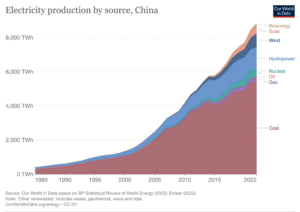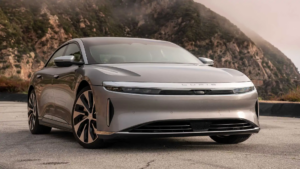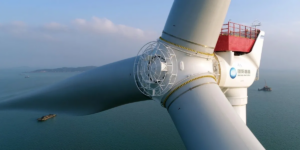In This Issue
- Flanigan’s Net Positive: China’s Renewable Revolution in Perspective
- U.S. EV Charging Networks
- Clean Energy Job Growth
- Volkswagen Group France Commissions 20 MW of Solar
- The Most Efficient Cars
- Wind Updates
- Solar O&M for Aging Systems
- Flanigan’s Ego-Logic Podcast Updates

Flanigan’s Net Positive: China’s Renewable Revolution in Perspective
This is amazing news. Sure there’s more to be done, but let’s relish in the goods. China may reach its aggressive renewable energy target five years early. It’s a country that the Washington Post noted is, “light years ahead of the U.S. in building clean power.” Among other renewable energy breakthroughs, in 2022, China finished the Baihetan hydroelectric power project, the country’s second largest hydropower station.

China is not only powering an ever-increasing slice of its own economy with renewables – largely solar and wind – but it is providing products like solar panels all over the world. As has been reported in EcoNet, China is the world’s factory. Chinese-made PV modules, wind turbines, gear boxes, and other key components made up for 70% of the global market share last year.
Global Energy Monitor is a San Francisco-based non-profit NGO which catalogs fossil fuel and renewable energy projects worldwide. Its Global Solar and Wind Power Trackers identify prospective projects that have been announced or are in the pre-construction and construction phases. According to its data released in June, China is on course to hit its 2030 target of 1,200 GW of renewable energy capacity five years early.
That’s impressive! Time to increase the goal, to raise the bar? Absolutely. Martin Weil at Global Energy Monitor makes clear that baseload coal is, “still holding sway as the dominant power source.” Others take it a step further, suggesting that the boom in renewables is sadly going hand in hand with a boom in coal-fired power plants. Every one of the coal plants that made up 40 GW of capacity that was given the go-ahead last year was in China. The world consumption of coal would have peaked in 2018 if not for China’s continued development of coal plants. This has added 862 million tons of annual coal production and consumption. A massive project in Mongolia features 16 GW of solar, 4 GW of wind, and as an odd partner… 4 GW of coal.

Image Courtesy of Our World in Data
Let’s get back and put China’s renewables in perspective. According to the Bureau of National Statistics, and when considering all power sources, in 2021 China had 2,380 GW of installed electrical capacity. By the end of 2022, the capacity had grown to 2,564 GW. (That compares to 1,160 GW in the U.S.) China is forecasted to have 3,000 GW of demand by 2025.
Currently China has 757 GW of operating wind and solar, already 30% of the nameplate capacity. Watch this space! In addition to the existing 757 GW, there is 750 GW of prospective wind and solar, the majority of which is expected to come on line by 2025. That is made up of 379 GW of utility-scale solar and 371 GW of wind capacity.
If all prospective projects are built and commissioned as planned, it will equate to a doubling of China’s utility-scale solar and wind power capacity. China is spending $250 billion a year on renewables, as much as the rest of the world combined. It is installing nearly half of the world’s new renewable energy capacity.

The numbers are impressive: China’s operating utility-scale solar capacity is 228 GW, more than the rest of the world combined. The world’s leading solar panel manufacturer, the Chinese company Jinko, is producing 30 GW of panels a year. That’s not a typo; nor is it off by an order. China’s wind capacity has doubled since 2017 and now stands at 310 GW. Of this, offshore wind is about 10%, or 31.4 GW. That’s more than all the offshore wind capacity in Europe where there is 22.07 GW of capacity made up of 5,047 turbines in 12 countries.
So hats off to China for being a leader in renewables. Its next step is to seize the opportunity now to fully green its power sector sans coal.


















